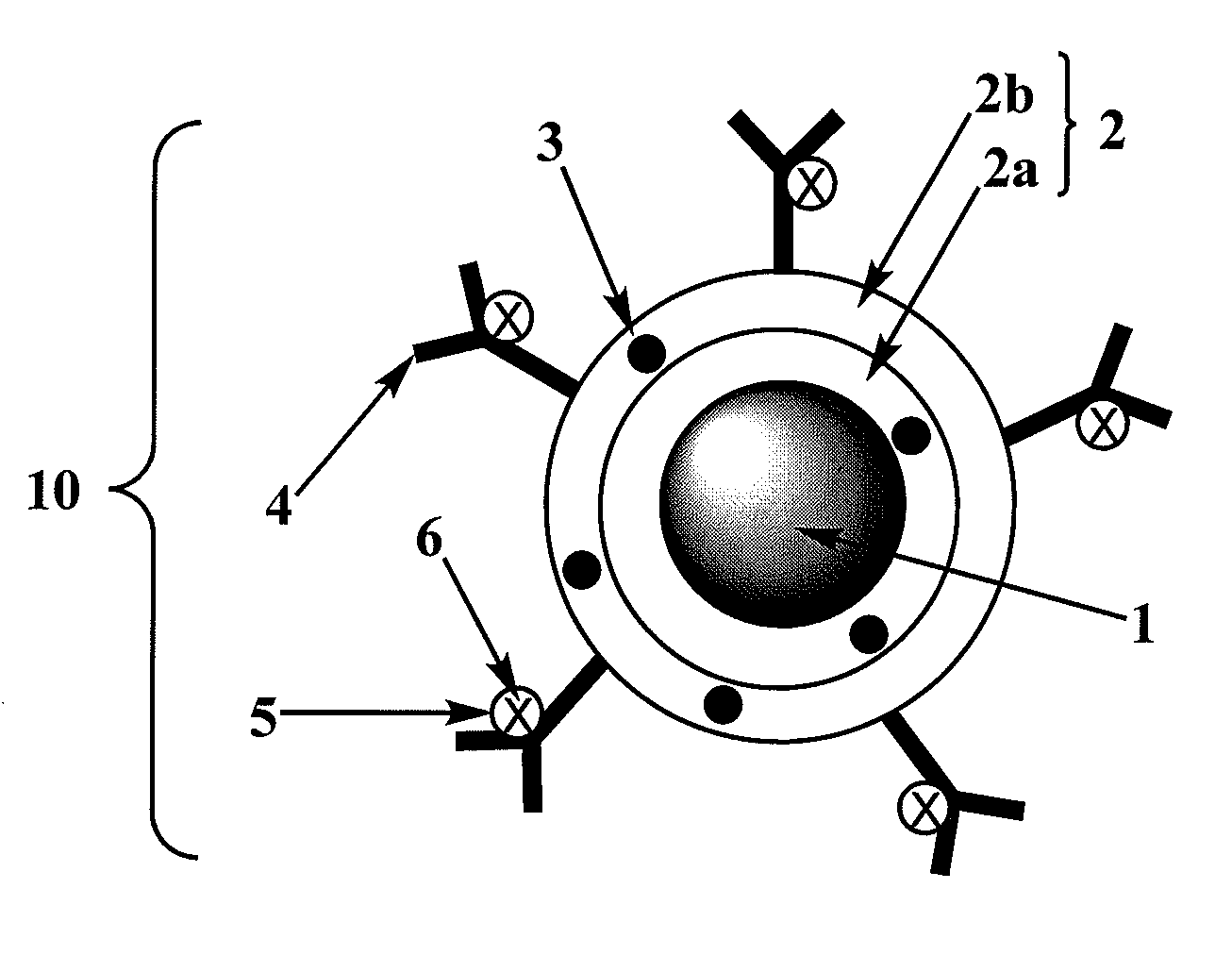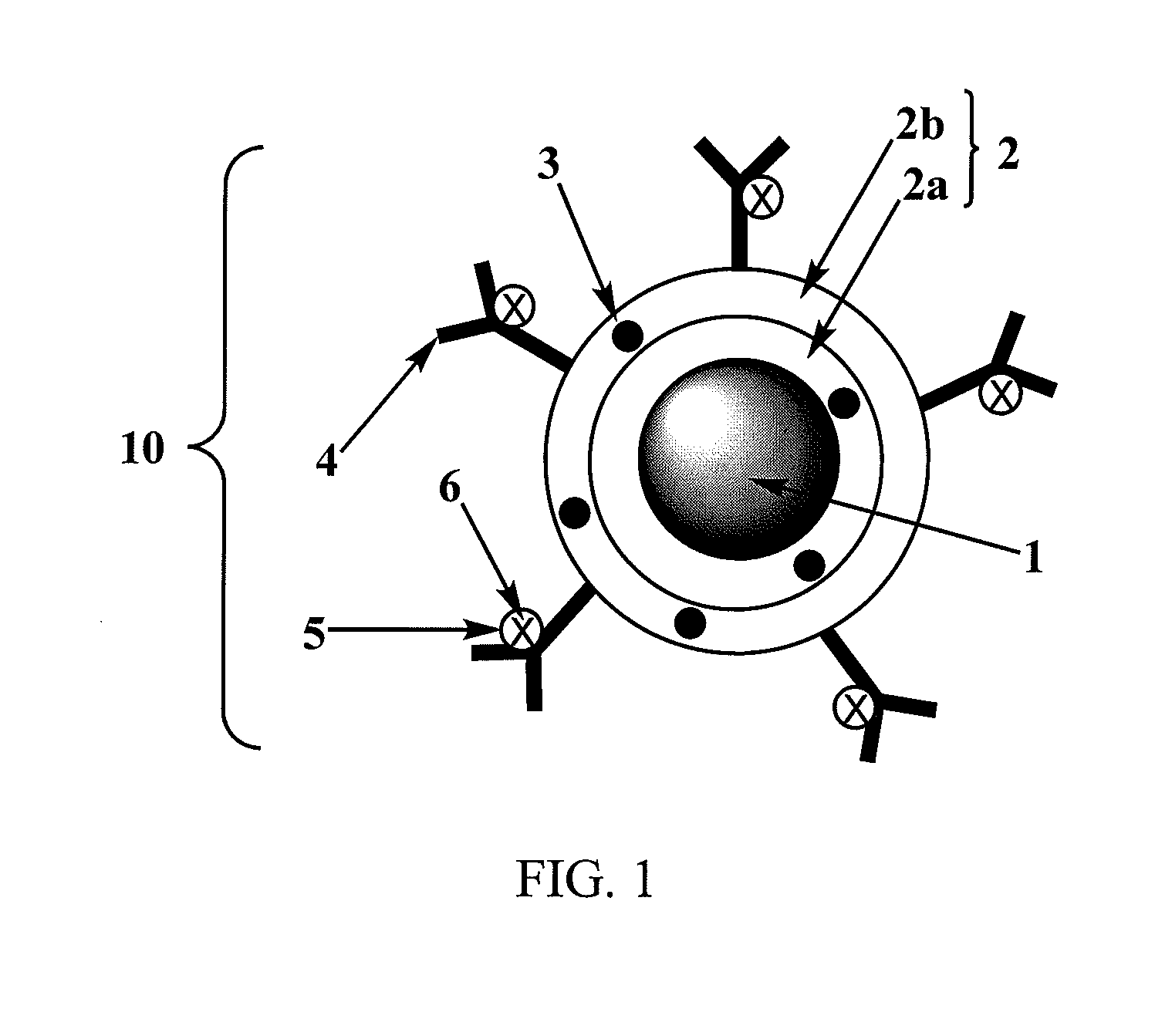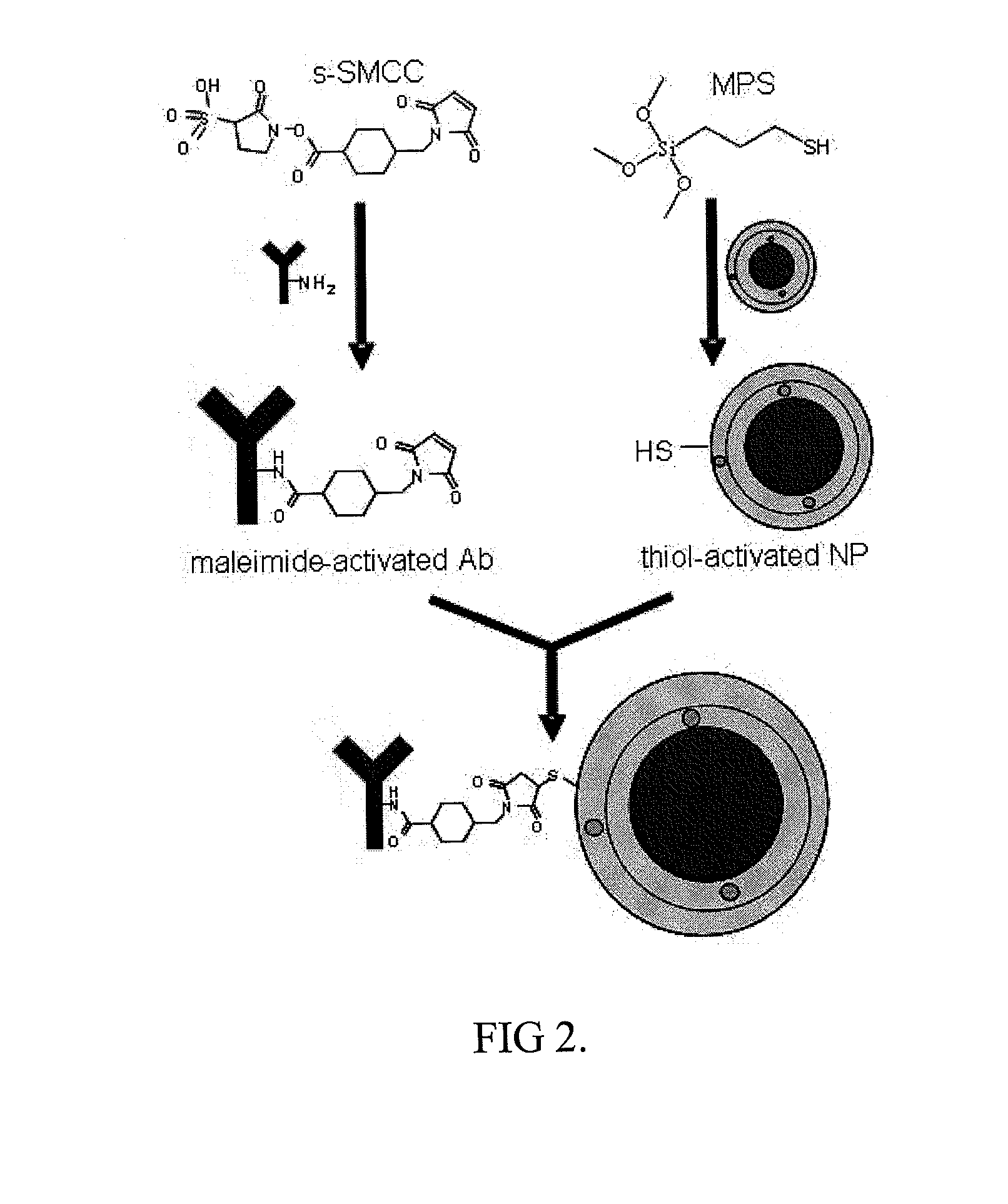Multifunctional nanoparticles and compositions and methods of use thereof
a nanoparticle and multi-functional technology, applied in the field of multi-functional nanoparticles and compositions and methods of use thereof, can solve the problems of lack of spatial and temporal resolution, lack of sensitivity of techniques, and few allow in vivo imaging and control of drug release at the cellular level, and achieve high resolution imaging, convenient separation, and effective diagnostic tools
- Summary
- Abstract
- Description
- Claims
- Application Information
AI Technical Summary
Benefits of technology
Problems solved by technology
Method used
Image
Examples
example 1
[0067]This example demonstrates a synthesis of ultra-small superparamagnetic iron oxide nanoparticles (USPIOs) in accordance with an embodiment of the invention.
[0068]With a stoichiometric ratio of 2Fe3+:Fe2+, 16 mmol (4.43 g) FeCl3.6H2O and 8 mmol (1.625 g) of FeCl2.4H2O are dissolved in 190 mL of deionized (DI) water at room temperature by magnetic stirring in a beaker. Under conditions of vigorous stirring, 10 mL of 25% NH3 is poured down the vortex of the iron solution. Immediately, magnetite forms a black precipitate. The USPIO solution is stirred for ten minutes, followed by three washes with DI water. Washing procedures are performed by putting the solution in a strong magnet, such as an electron paramagnetic resonance magnet, allowing the particles to be pulled to the side by the magnetic field. The clear supernatant is then removed by a pipette. In order to stabilize the particles in solution, the particles are surface-complexed with citrate ions. First, the particle surfac...
example 2
[0071]This example demonstrates transmission electron microscopy (TEM) characterization of the USPIOs prepared in Example 1 in accordance with an embodiment of the invention.
[0072]Both bare USPIO and silica-coated USPIOs samples are drop-casted on carbon grids. The USPIO core of the particles have an average diameter of 9.2 nm (s=1.4 nm). Using this diameter, the number of USPIOs synthesized in Example 1 is calculated. Assuming the complete precipitation of iron chloride, no losses during washing, and that the particles are spherical, 9.01e17 (1500 nmol) USPIO are produced per batch. In the final volume of 50 mL H2O, the concentration of USPIO is 30 nmol / mL. TEM measurements of silica layers are used to determine the optimal conditions for the protocol to generate shells of 2 nm thickness.
example 3
[0073]This example demonstrates a conjugation of Cy5.5 to a USPIO in accordance with an embodiment of the invention.
[0074]USPIOs are first coated with silica and then conjugated to Cy5.5 using a known method. Instead of functionalizing particles with APTES and then adding Cy5.5, first APTES should be attached to Cy5.5. Then the APTES-Cy5.5 conjugate can react with the silica surface of particles. The Cy5.5-silica-USPIO particles are coated with a final layer of silica to encapsulate the dye and make the outer surface of the particles biocompatible. The same silication protocol is used with a shortened reaction time. Samples from each point during nanoparticle synthesis are observed using transmission electron microscopy (TEM), confirming that the Cy5.5 conjugation process did not degrade the silica layer.
[0075]Thin layer chromatography (TLC), a technique used to for separating organic compounds, is used to confirm conjugation in the APTES-Cy5.5 sample. A silica plate is dotted with ...
PUM
| Property | Measurement | Unit |
|---|---|---|
| diameter | aaaaa | aaaaa |
| diameter | aaaaa | aaaaa |
| diameter | aaaaa | aaaaa |
Abstract
Description
Claims
Application Information
 Login to View More
Login to View More - R&D
- Intellectual Property
- Life Sciences
- Materials
- Tech Scout
- Unparalleled Data Quality
- Higher Quality Content
- 60% Fewer Hallucinations
Browse by: Latest US Patents, China's latest patents, Technical Efficacy Thesaurus, Application Domain, Technology Topic, Popular Technical Reports.
© 2025 PatSnap. All rights reserved.Legal|Privacy policy|Modern Slavery Act Transparency Statement|Sitemap|About US| Contact US: help@patsnap.com



